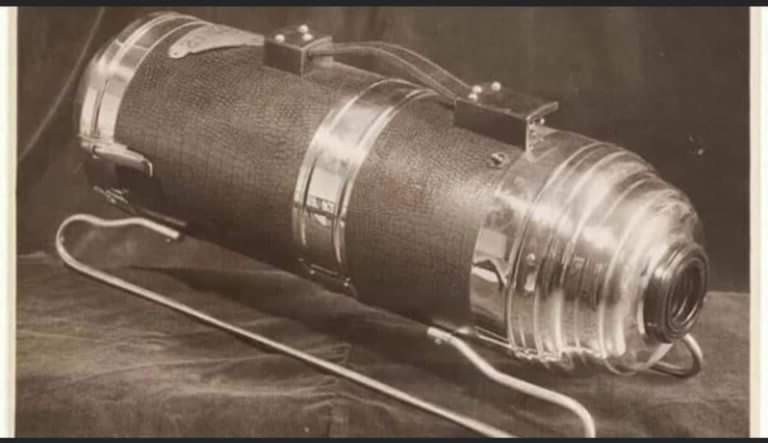A Voyage Through Time: The Evolution of Scientific Instruments

ADVERTISEMENT
A Voyage Through Time: The Evolution of Scientific Instruments
Introduction Throughout history, the development of scientific instruments has been pivotal in expanding our understanding of the world and beyond. The object in the image, with its cylindrical form and intricate components, invites us to explore the evolution of these tools that have shaped human knowledge.
Historical Context The design and appearance suggest that the instrument could be from the mid-20th century, a period marked by rapid advancements in technology and an increased appetite for new scientific discoveries. Such instruments were often at the forefront of research and exploration, possibly used in fields like astronomy, oceanography, or even early space exploration.
Description and Speculation of Function This particular instrument, featuring a robust metal body, glass viewports, and external wiring, might have been used for visual observations or environmental measurements under extreme conditions. Its construction suggests it was built to withstand significant external pressures, which could mean it was used underwater or in outer space environments.
Technological Innovations and Materials The use of metals and glass highlights the era’s reliance on durable materials capable of enduring harsh operational environments. The external wiring and visible mechanical parts might indicate functionalities related to data collection or transmission, suggesting its use in remote or inaccessible locations.
Impact on Modern Science Exploring the functionalities and the historical applications of such instruments helps us appreciate how they paved the way for modern devices. Today’s tools are more compact, efficient, and precise, thanks to the foundational technologies developed during this instrument’s time.
ADVERTISEMENT
Conclusion The mysterious and somewhat arcane appearance of the instrument serves as a reminder of the ingenuity and curiosity that drive scientific progress. By studying these artifacts, we connect with the innovators of the past, whose tools helped unravel some of the many mysteries of our universe.




